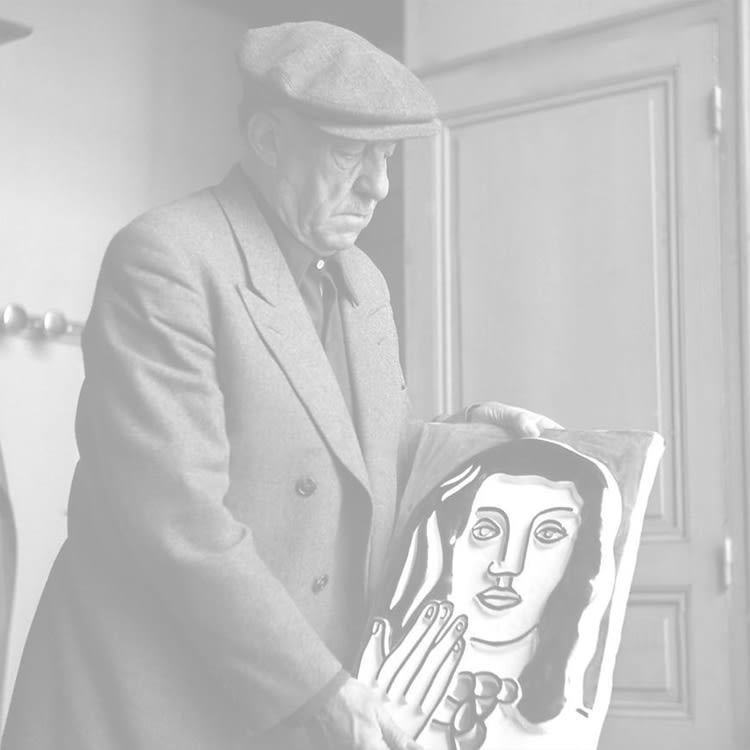FERNAND LÉGER 1881-1955
Fernand Léger est un artiste cubiste et moderniste, dont les œuvres sont exposées à la galerie HELENE BAILLY.
Fernand Léger naît à Argentan en France le 4 février 1881. Il commence sa carrière artistique à Caen où il suit une formation d'architecte et travaille tout d'abord comme dessinateur en architecture. En 1900, il se rend à Paris et obtient l'autorisation d'entrer à l'École des Arts Décoratifs en 1903 ; il est de plus élève à l'Académie Julian. Cézanne, dont Fernand Léger voit les tableaux lors de la grande exposition qui lui est consacrée au Salon d'Automne de 1907, est son premier maître et influence de manière décisive son œuvre. Fernand Léger se lie d'amitié avec Delaunay et entretient des liens avec des artistes tels Matisse, Rousseau, Apollinaire et les peintres cubistes.
A partir de 1909, Léger développe un style cubiste, réducteur et particulier, dont la rigueur formelle s'associe à des couleurs pures avec de forts contrastes en 1913-1914. En qualité de peintre, Fernand Léger a une grande influence sur le développement du cubisme, du constructivisme et de l'affiche publicitaire moderne ainsi que sur d'autres formes de l'art appliqué. De 1911 à 1912, l'artiste fait partie du groupe Section d'Or. Pendant la Première Guerre mondiale, Léger est confronté à la technique moderne, il est fasciné par cette force qu'il ressent comme quelque chose de surhumain et de puissant et par la beauté des constructions mécaniques. Il est également influencé par le sentiment de sécurité convaincant du purisme ainsi que par le néo-classicisme et les artistes comme Picasso. Vers 1920, le style pictural de Fernand Léger atteint une sorte de classicisme mécanisé, une représentation monumentale précise et géométrique durement définie des objets modernes comme c'est le cas pour les roues dentées et les vis auxquelles l'individu, être s'apparentant également à une machine, est incorporé. Dans les années 30 et 40, le surréalisme influence également l'artiste et laisse apparaître un style moins rigide avec des lignes courbes.
De 1940 à 1945, Léger vit et travaille aux Etats-Unis et enseigne à l'université de Yale. Les motifs désormais prédominants de l'artiste issus du monde industriel de l'homme montrent des formes post-cubistes combinées à la précision figurative du réalisme. Fernand Léger meurt à Gif-sur-Yvette dans la banlieue de Paris le 17 août 1955.
Source : www.fernand-leger.com




